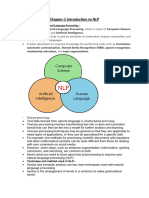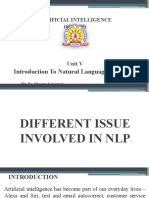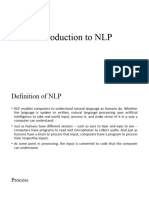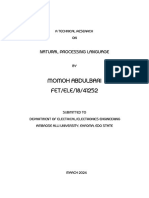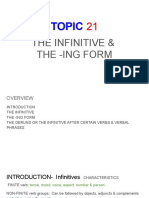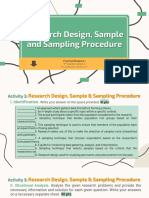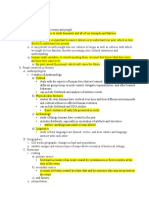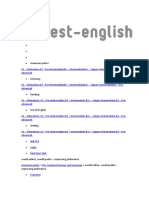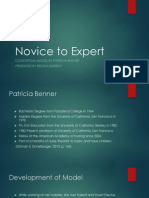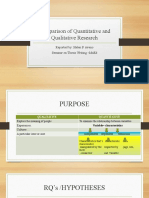0% found this document useful (0 votes)
12 views15 pagesIntroduction To NLP
The document provides an overview of Natural Language Processing (NLP), highlighting its complexity and the intersection of computer science and linguistics. It discusses the two main components of NLP: Natural Language Understanding (NLU) and Natural Language Generation (NLG), along with various tasks and the NLP pipeline. Additionally, it covers essential prerequisites and the building blocks of text processing, including tokenization and normalization techniques.
Uploaded by
peacelenaCopyright
© © All Rights Reserved
We take content rights seriously. If you suspect this is your content, claim it here.
Available Formats
Download as PDF, TXT or read online on Scribd
0% found this document useful (0 votes)
12 views15 pagesIntroduction To NLP
The document provides an overview of Natural Language Processing (NLP), highlighting its complexity and the intersection of computer science and linguistics. It discusses the two main components of NLP: Natural Language Understanding (NLU) and Natural Language Generation (NLG), along with various tasks and the NLP pipeline. Additionally, it covers essential prerequisites and the building blocks of text processing, including tokenization and normalization techniques.
Uploaded by
peacelenaCopyright
© © All Rights Reserved
We take content rights seriously. If you suspect this is your content, claim it here.
Available Formats
Download as PDF, TXT or read online on Scribd
/ 15





















